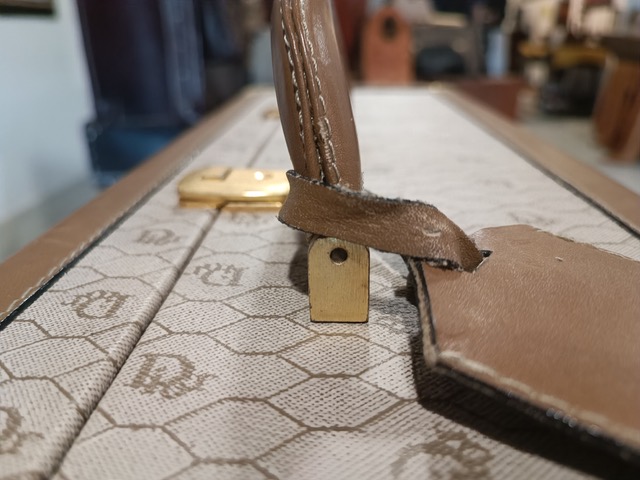
Prototype of Dior's first suitcase that was made in Ubrique. Photo © Karethe Linaae
Where are Dior’s handbags, Prada’s fashion accessories and Cartier’s leather-covered jewellery boxes made? In a sweatshop on the outskirts of Paris? In a factory in China? Or perhaps in the fashion district in Milan? No, many of the leather goods of these and other exclusive brands are made in a remote rural Andalusian village by the name of Ubrique. Want to know more? Join me on a visit to get acquainted with the town's leather history and to separate the rumours from facts regarding Ubrique’s almost mythical leather industry.
Hidden, but not forgotten
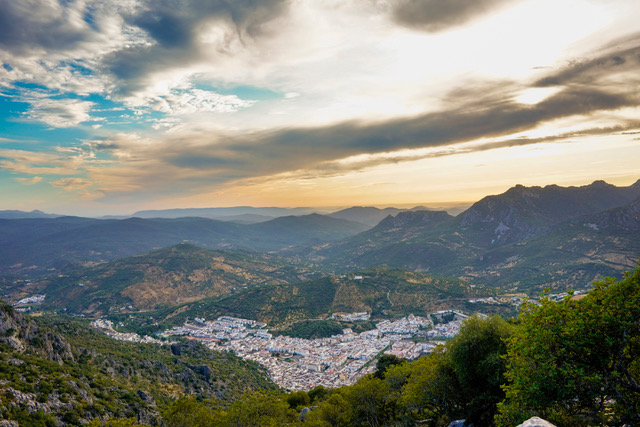
Ubrique – tucked in a valley. Photo © Manolo Canto
There is no easy way to get to Ubrique. Whether you come from the coast or from the inland, you end up on a narrow corkscrew of a road that you must follow down to the bottom of a secluded valley where the village is located. It is not only hidden, but most of the companies who have leather production facilities in the town, work behind locked doors. The companies hired to make the latest leather accessories for some of the world’s most prestigious fashion designers and their designs, are highly confidential. In fact, it is so secret that the employees must sign a confidentiality agreement and are not permitted to bring their mobile phones into the workplace. For this reason, I decided to make my first stop at the town's leather museum where they gladly share information about Ubrique's leather history.
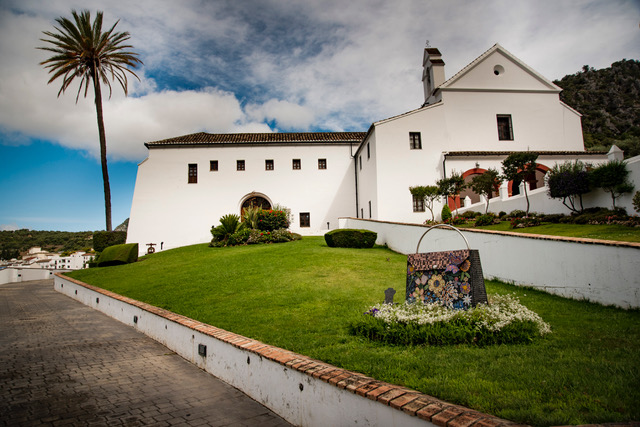
Leather museum in Ubrique. Photo © Manolo Canto
El Museo de la Piel is housed in a former Capuchin monastery on a slope above the town centre. The building has been newly restored and contains an incredible collection of leather articles, tools, photos, furniture, and equipment that show the development of the leather industry in this area in the 19. and 20. Century. The prime instigator of the museum is the passionate Maribel Lobato who started the collection (often from landfills and rubbish bins), gathering stories from the oldest inhabitants, and who still gives guided tours of the museum. Regretfully, she doesn’t speak English, but the museum is truly worth a visit even if one does not understand Spanish (Price 3 €). Should one want to get one's hands dirty, Paco Solano offers workshops for school classes and other interested parties who return home with a self-made leather purse from Ubrique (Course fee 5 € per person).
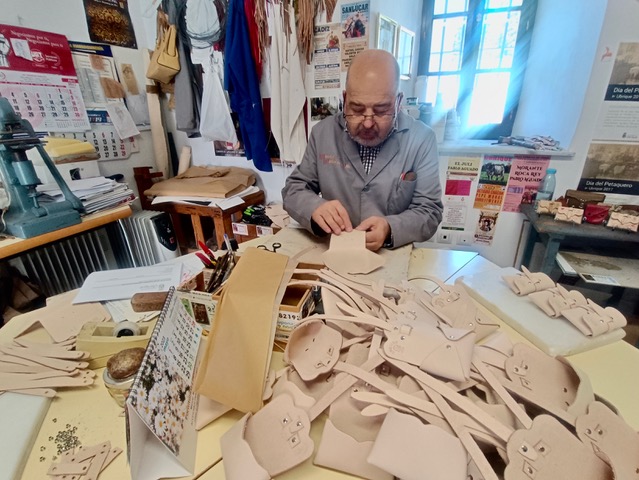
Paco Solano will teach school classes how to make their own leather purses. Photo © Karethe Linaae
These days, most of the leather articles are produced in larger plants located on the outskirts of town, but just a few decades back one could hear the hammering from the leather workshops that one could find on virtually every street and alley in town. All the inhabitants used to work in or for the leather industry, including children down to the age of six. And everyone had their own wooden leather hammer - called patacabra because they looked like the hind leg of a goat.
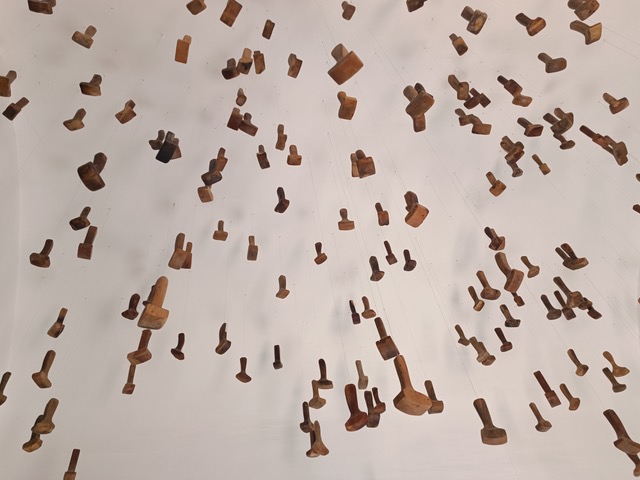
Collection of donated ‘patacabras’ at Ubrique’s leather museum. Photo © Karethe Linaae
It wasn’t an easy task to feed an entire family in rural Andalucía in the past. Therefore, the workers were given the opportunity to bring home extra work - after a 12-hour workday, seven and later six days a week. Every single piece of leather had a use - including leather from chicken legs that were boiled and pressed and used as watch straps, ox testicles that were made into tobacco purses, and fish skin that was made into shoes! As the fame of the town’s leather works grew, Ubrique started importing leather from all around the world.
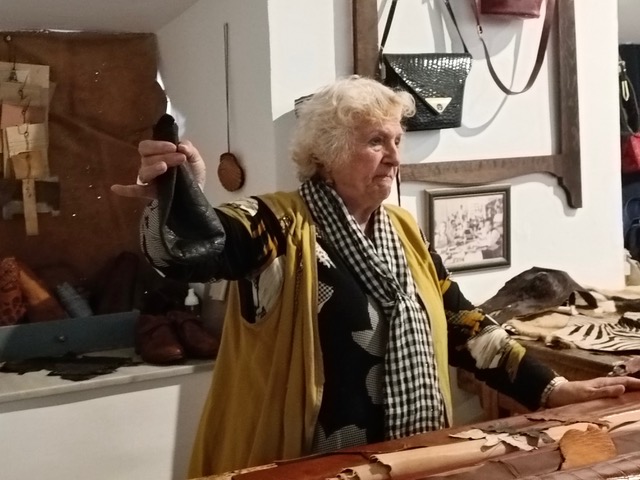
Maribel Lobato tells the fascinating leather history. Here with a tobacco purse made from ox testicles. Photo © Karethe Linaae
The villagers were hard-working, persistent, and forward-thinking. They saw the need for souvenirs on the coast and made inexpensive leather articles decorated with Spanish bullfighters and flamenco dancers – articles that sold like hotcakes when the mass tourism started on the Costa del Sol. Ubrique was also the place where they started producing the official leather covers for the passports of almost every country in the world, including Spain, France, England, Italy, Portugal, Israel, Venezuela and Mexico. Not to forget the fashion accessories. In the museum, one can see the prototype of Dior’s very first leather suitcase made right here in Ubrique.
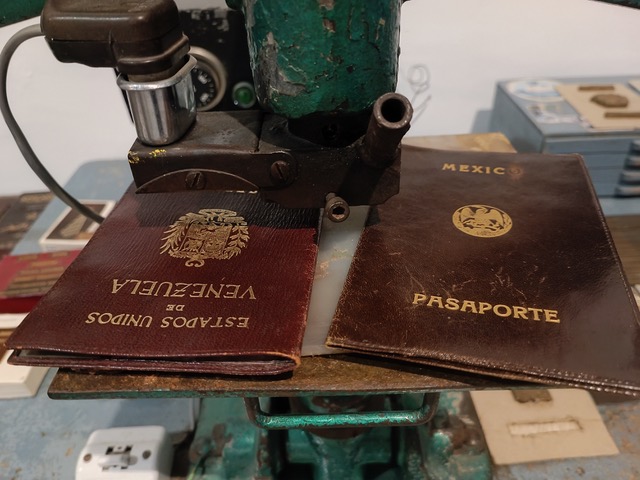
Leather covers for international passports were made here. Photo © Karethe Linaae
New life to the industry
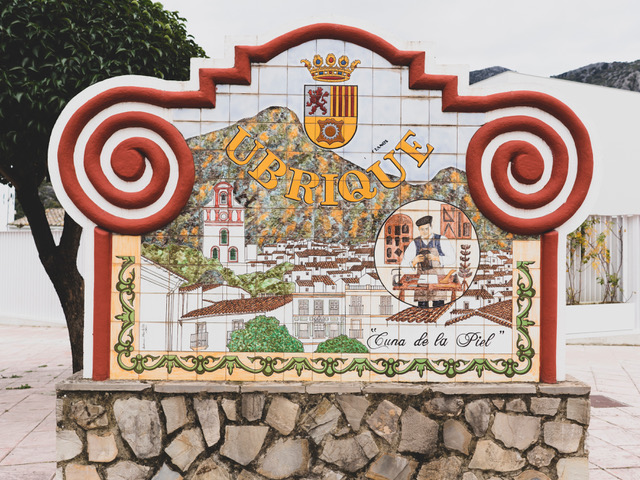
Entrance to town. Photo © Manolo Canto
It is almost unbelievable that a tiny remote town off the beaten path in Andalucía is currently the world’s largest leather bag producer and exporter – especially since the leather they utilize does not come from the area, but from Italy and other countries. A couple of decades back, some of the workshops in Ubrique began to close their doors, because their large international clients moved their production to Asia to save money. There were rumours circulating that some designers had their bags fabricated in China to subsequently put a Made in Ubrique-label on the goods. Whether it is true or not, the trend didn’t last very long, as the designers soon discovered that the quality of the goods could never compare to the products made in the little Andalusian village. Hence, the clients came back to the town, which today hires more people and makes more leather bags than ever. According to the town statistics, they produce between 5,000 and 9,000 bags a week, which is more than any other place on the planet. Ubrique’s exclusive leather goods are sold to more than 50 countries (including France, the UK, Italy, China, the USA, and Japan) and produce accessories for some of the world's most renowned designers.
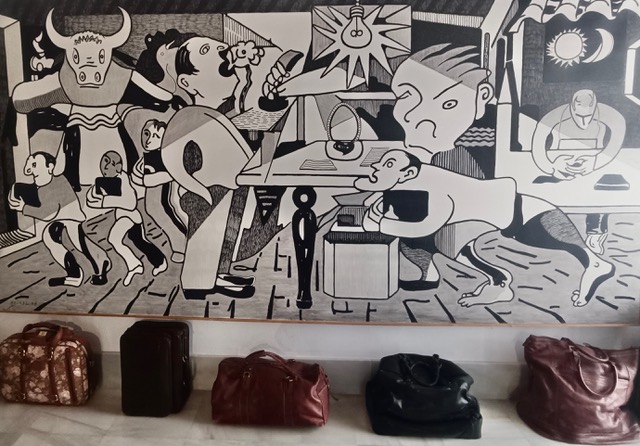
Ubrique’s leather history made in leather. Photo © Karethe Linaae
I am lucky to be invited to Adana Piel, one of the town's leather producers. The owner, Antonia González, took over the business from her father and has now opened a second production facility. While she describes her father as «a Gepetto» (Pinocchio’s father), she herself is more of a businesswoman. Her company produces several hundred exclusive leather bags every day, both by hand and with the aid of modern machinery. We rush past the diligent workers who come here to work from all over Spain and Latin America.

Factory owner Antonia González and designer Manolo Canto from Adana Piel. Photo © Karethe Linaae
In the workshop, I also meet the photographer and designer Manolo Canto who is currently creating Adana Piel’s own line of handbags, Briza. I am graciously allowed to take a few photos, though Antonia immediately points out that the bags are only prototypes and are not approved for production yet.
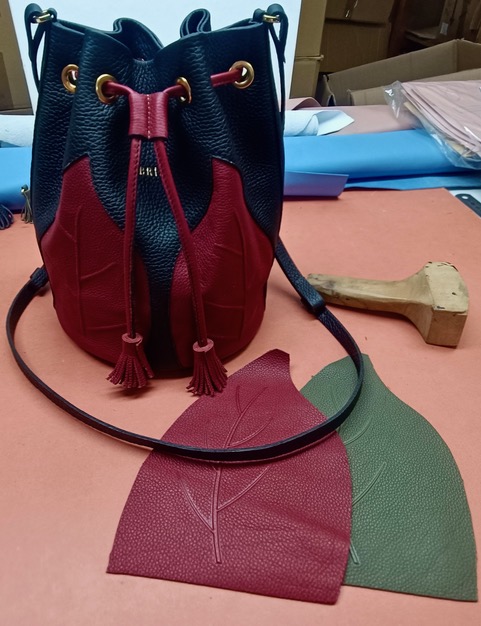
Prototype of Briza handbag designed by Manolo Canto for Adana Piel. Photo © Karethe Linaae
On the walls of their office, one can admire the company’s former designs which include handbags by Prada and, one of my favourites, Jacquemus. His collection of world-renowned mini handbags was recently produced in giant format, given wheels, and driven through the streets of Paris. But the actual bags were produced here in little Ubrique!
While most of Andalucía’s white villages suffer from depopulation and unemployment, Ubrique is constantly looking for skilled labourers and has trouble housing all the leather workshops. The town is alive and well, growing and prospering. And there is only one reason – the excellent and superior quality of their leather production.
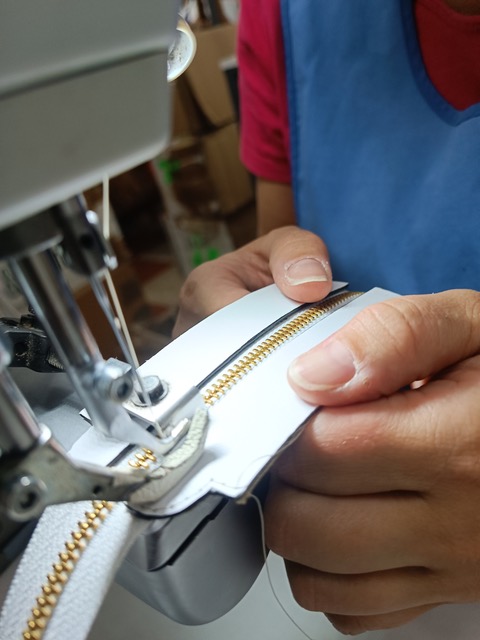
From the Anana Piel leather workshop. Photo © Karethe Linaae
Make a trip to the village and experience the leather history of Ubrique for yourself. I can assure you that you will leave town with a new handbag or a new designer belt from one of the many leather stores on the town’s main street.
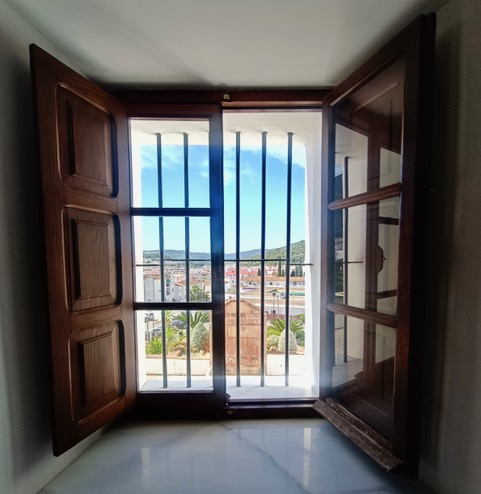
Window to Ubrique. Photo © Karethe Linaae
UBRIQUE DATA:
Inhabitants: 16 383
Inhabitants who work directly or indirectly with leather: 80 %
Number of leather factories and workshops: approx. 200
Types of products:
handbags, wallets, belts, suitcases, briefcases, mobile covers etc.
International brands who make/made leather handbags and accessories in Ubrique:
Dior, Louis Vuitton, Loewe, Carolina Herrera, Polène, Chloé, Gucci, Chanel, Jacquemus, Strathberry and many more.
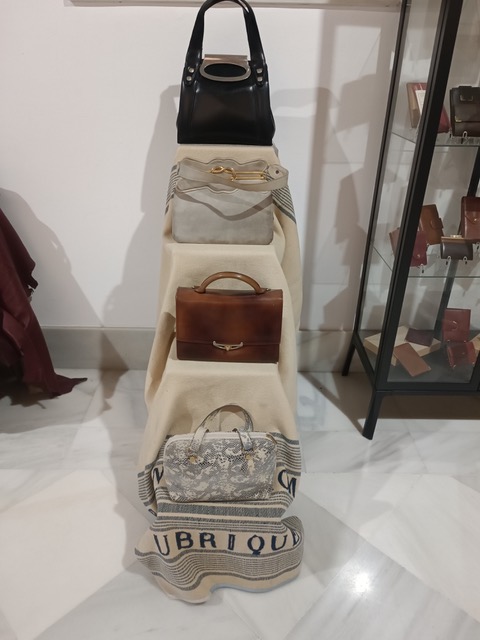
Selection of classic Ubrique designer bags. Photo © Karethe Linaae